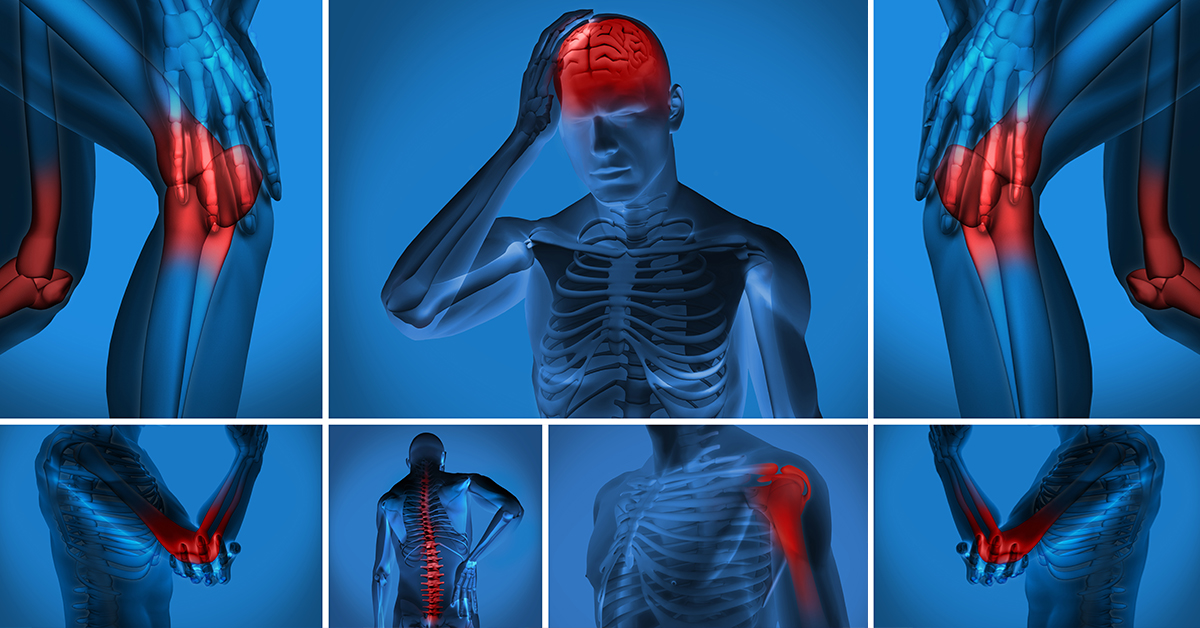Learning how to describe your pain is often the first step in your road to recovery.

Defining Pain
Pain may be classified by its duration (acute or chronic/persistent pain) or by its pathophysiology (by the kind of damage that causes it). The latter classification divides pain into nociceptive pain and neuropathic pain.
Nociceptive pain
Nociceptive pain is a sharp, throbbing, or aching pain due to tissue damage. This is the most common type of pain that everyone has experienced to some degree.
Tissue damage and the resulting nociceptive pain can be the result of:
- Trauma (e.g., broken bone)
- Sprained, strained or torn tendon or ligament
- Superficial burn
- Superficial cut
- Tumor pressing on an internal organ
Neuropathic pain
Neuropathic pain is numbness, pins and needles, and/or burning pain due to nerve damage. The nerve damage may be in the brain, spinal cord or peripheral nerves \ (nerves in the rest of the body that send signals to the brain).
Nerve damage and the resulting neuropathic pain can be the result of:
- Nerve compression/pinched nerve (e.g., herniated disc, trigeminal neuralgia)
- Trauma
- Autoimmune disorders (multiple sclerosis, HIV)
- Infections (e.g., shingles)
- Diabetes
- Nutritional deficiencies
- Toxins
- Tumors pressing on a nerve or a group of nerves
Nerves allow communication between the brain and the rest of the body. This communication involves pain signals. Therefore, nerve damage can interfere with the transmission of these signals as well as cause abnormal pain signals. For example, patients may feel burning sensations even when there is no external stimulus affecting the area involved. Nerve damage can also manifest as hypersensitivity to things such as touch/pressure or temperature.
Complex Conditions and Categorization of Pain
Due to the complexity of pain, it may not easily be categorized in an "either/or" sense. In fact, there are many patients that suffer from chronic/persistent conditions, such as diabetes, cancer and multiple sclerosis, whose pain defies a simple categorization. These complex types of pain may belong to multiple categories. Therefore, each patient's pain must be examined in order to come up with an individual diagnosis and a holistic treatment plan.
Treatment Options
There are a multitude of treatment options available for patients suffering from pain. They range from therapeutic to medical to surgical and often more than one course of treatment is required to find the best method of helping patients learn to manage their pain.
Pain treatment options include:
- Pharmacotherapy
- Steroid injections / blocks
- Acupuncture
- Chiropractic care
- Physical therapy/physiatry
- Psychological therapy
- Nutritional therapy
- Neurostimulation
- Targeted drug delivery
- Neuroablative


